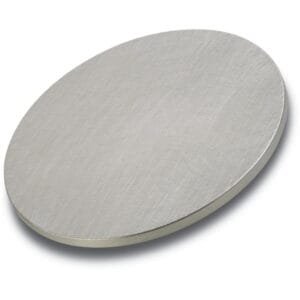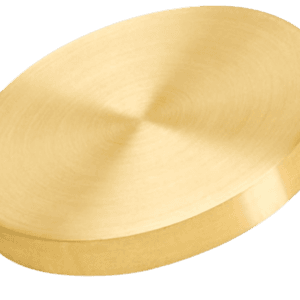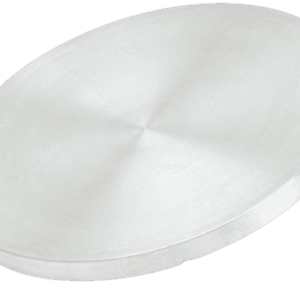Lanthanum Strontium Cobalt Iron Oxide Sputtering Target Description
Lanthanum Strontium Cobalt Iron Oxide Sputtering Target is a specialized material used in the sputter deposition process. This compound, part of the perovskite oxide family, is widely utilized in applications such as solid oxide fuel cells (SOFCs), oxygen permeation membranes, and related fields.
In sputtering, a technique for depositing thin films onto substrates, the target material is bombarded with high-energy ions. This bombardment causes atoms or molecules to be ejected from the target surface and deposit onto the substrate, forming a thin film.
Lanthanum Strontium Cobalt Iron Oxide (LSCF) is a mixed metal oxide that integrates lanthanum, strontium, cobalt, and iron in a precise ratio. Its composition is optimized for electronic and ionic conductivity, making it particularly effective as a cathode material in SOFCs.
Related Product: Lanthanum Strontium Chromate Sputtering Target, Lanthanum Strontium Copper Oxide Sputtering Target
Lanthanum Strontium Cobalt Iron Oxide Sputtering Target Specifications
| Compound Formula | LaxSr1-xCoyFe1-yO3 |
| Molecular Weight | 97.63 |
| Appearance | Gray Target |
| Melting Point | >1000℃ |
| Density | – |
| Available Sizes | Dia.: 1.0″, 2.0″, 3.0″, 4.0″, 5.0″, 6.0″
Thick: 0.125″, 0.250″ |
Lanthanum Strontium Cobalt Iron Oxide Sputtering Target Handling Notes
Indium bonding is recommended for Lanthanum Strontium Cobalt Iron Oxide Sputtering Targets due to the material’s characteristics, such as brittleness and low thermal conductivity, which are not ideal for sputtering. This material exhibits low thermal conductivity and is susceptible to thermal shock, making indium bonding a preferred choice to ensure stable performance and reliable deposition results.
Lanthanum Strontium Cobalt Iron Oxide Sputtering Target Application
Lanthanum Strontium Cobalt Iron Oxide Sputtering Target is crucial for the fabrication of materials used in advanced energy and electronic devices. Its unique properties, including high electronic and ionic conductivity, make it ideal for applications such as solid oxide fuel cells (SOFCs) and other high-performance energy solutions.
Lanthanum Strontium Cobalt Iron Oxide Sputtering Target Packaging
Our Lanthanum Strontium Cobalt Iron Oxide Sputtering Targets are meticulously handled during storage and transportation to maintain the highest quality of our products in their original condition.


 MSDS File
MSDS File



Reviews
There are no reviews yet.